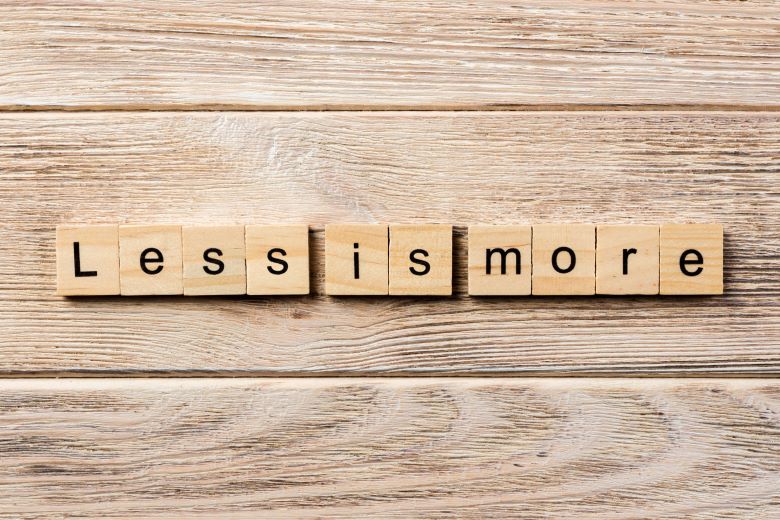What can a famed architect teach internal communicators?
Mies van der Rohe’s “less is more” approach will help you build better stories with fewer words and better images.

If all the focus on “snackable content” shows anything, it’s that communicators apparently love to eat. Or at least love food metaphors like “bite-sized messages.”
Whether all this talk helps achieve the goal of creating information that is easy for audiences to understand is a different matter. Even Wikipedia’s guidelines say, “Be as concise as possible.” How’s that going?
Here are simple tips to help you develop digestible (another food metaphor) content your employees will savor.
1. Use fewer words.
If Ludwig Mies van der Rohe had been a writer instead of a famed minimalist architect, then “Less is more” would have put him in Snackable Content Hall of Fame.
“Today, people who are tasked with communications are working against overloaded, time-strapped, and very distracted audiences,” says Julie Baron, an expert in strategic communications and an affiliate consultant with Ragan Consulting Group. “The shorter the content, the better.”
The format can be your friend.
“Invite the reader into your text by being brief, for example, using subheadings and strong verbs; those are the things that make your copy scannable,” Baron says. And “don’t forget bullets to break up text,” she adds.
2. Share stories, not just facts.
When creating content, ask yourself: What is it that I want my colleagues to learn, experience or feel?
Much of internal communications is “story deficient,” without emotion: a report filled with too many hard-to-understand charts or a text-heavy slide deck. Just because it’s in PowerPoint doesn’t mean it’s readable. Remedy that by focusing on employee experiences. And use images, not just written words.
Stories do not need to be long. Unilever’s Dove brand of personal care products is often praised for its storytelling. Consider this tweet, which tugs at your emotions with a simple rotation of photos.
“Stories aren’t just for movies, books or podcasts – they are interwoven in everything we come across on a daily basis,” documentary filmmaker Jia Wertz writes on Forbes.com. “And that includes short-form storytelling on social media.”
3. Seeing is believing.
Nearly half of employees say they consider video the most engaging form of communication, compared with 37% who prefer text with images, according to a survey by screen-capture software maker TechSmith. (Just 15% say email is the most engaging. Who are those people?)
“On the visual side, even if you use images to support the points you’re trying to make, video is going to make it that much more powerful,” Baron says.
But just because it’s video, don’t take too long to tell your story. Again, let’s take our cue from advertising. Automakers are always trying to capture our emotions, “You deserve a car that thrills you,” says Nissan.
Unless your employees are racecar drivers, take a look at this ad for the Subaru Forester. As a family unpacks their compact SUV, they also unpack their memories.
Don’t be discouraged if your internal comms budget doesn’t match the resources of Dove, Nissan and Subaru to produce highly polished videos, however. You can outspend them in the capital that matters most: creativity and ingenuity.
Cierra Selby’s work has been featured by The Communications Network, Nonprofit Hub, and Nonprofit New York. Schedule a call with Kristin Hart to learn about RCG’s writing coach program and other internal comms services. Follow RCG on LinkedIn here and subscribe to our weekly newsletter here.






